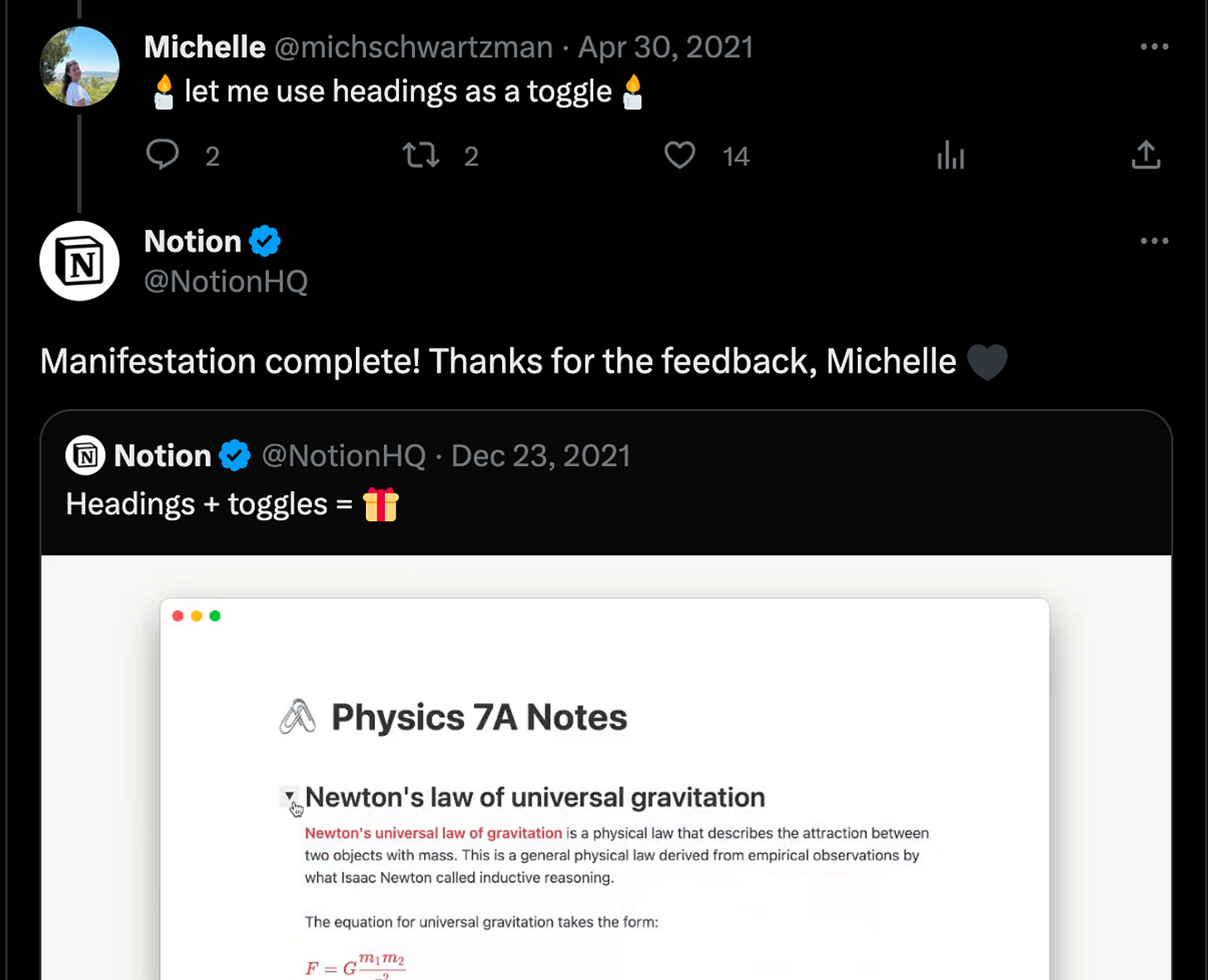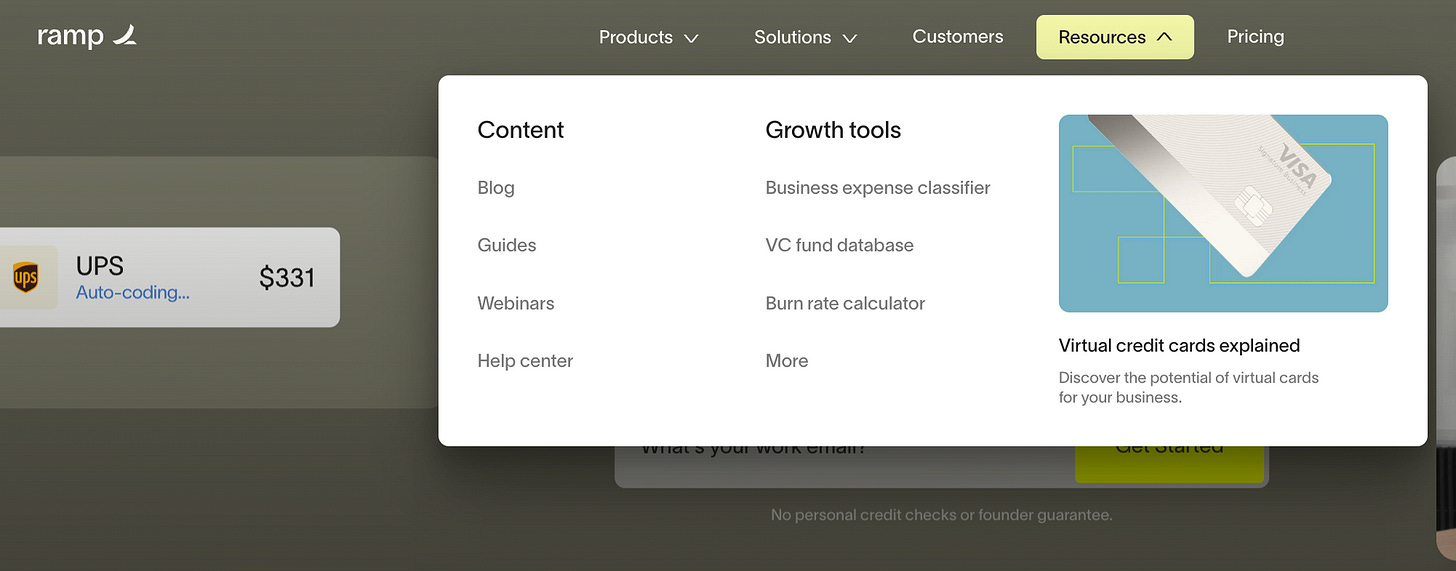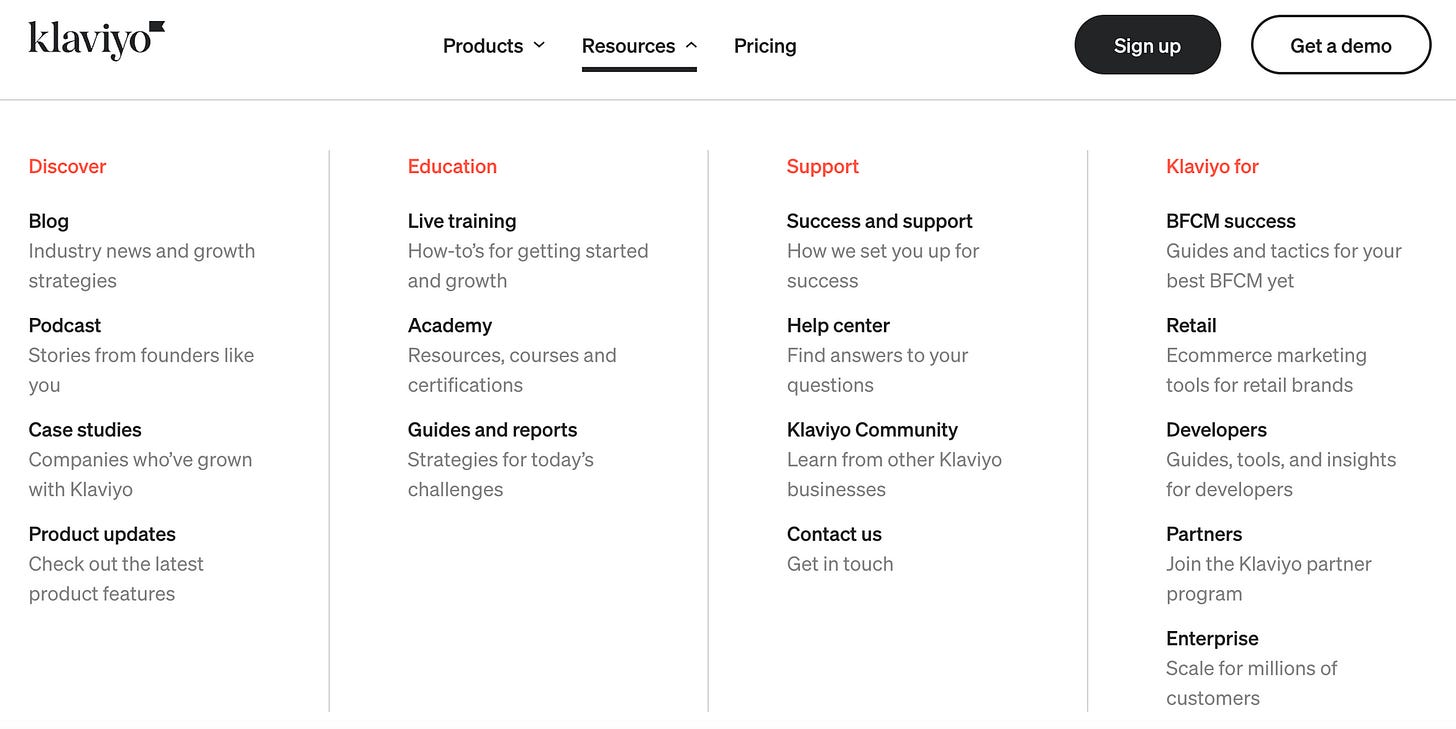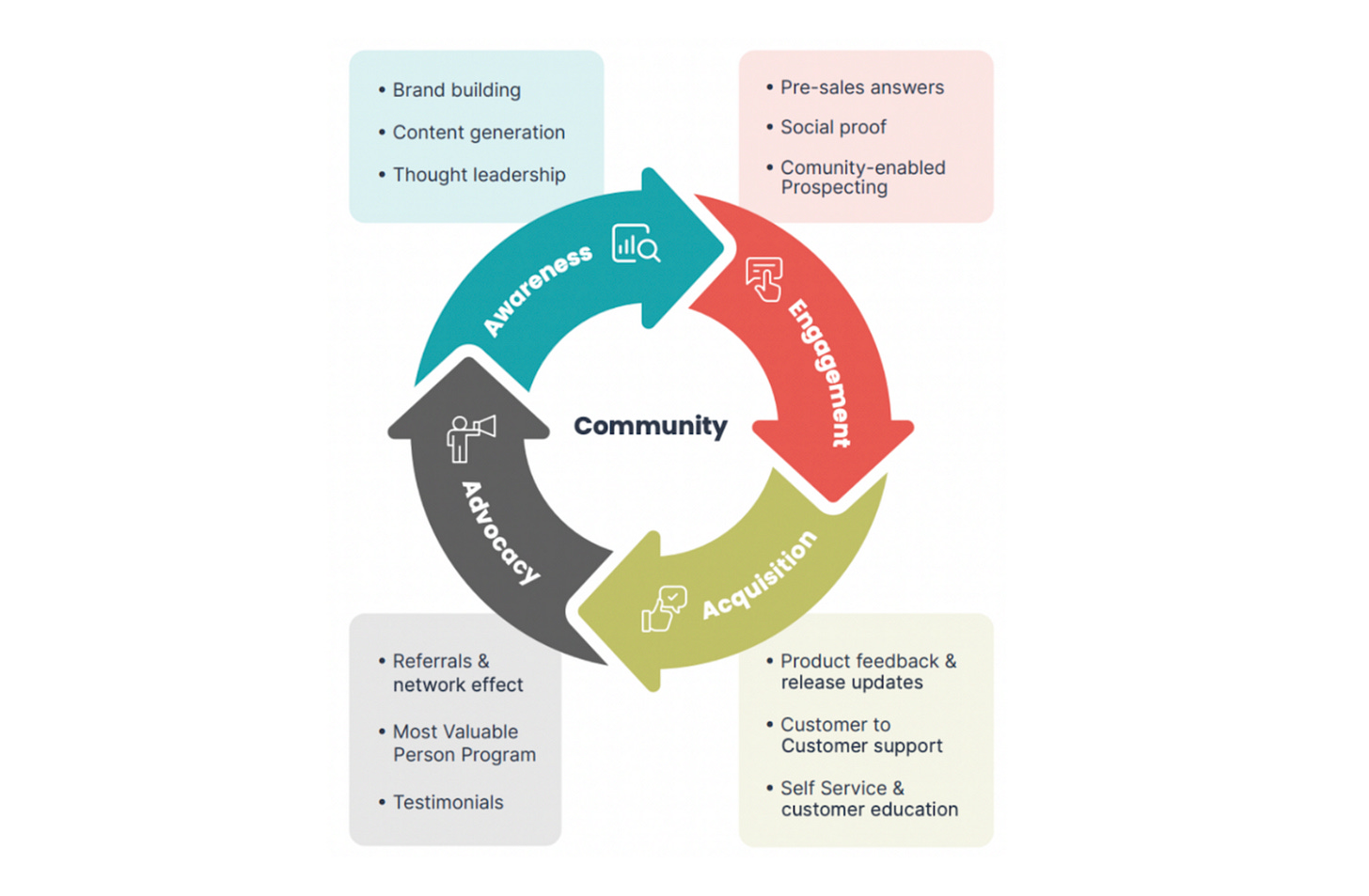(3/3) Authenticity-Led Growth
How category-defining companies will configure their growth engines in 2024
This article is the last of a 3-part series on growth as a function of customer centricity.
Part 3: Authenticity-Led Growth
Growth levers are consistent, defensible, and repeatable. Authenticity is all of the above.
This 3-part series isn’t meant to be a manifesto about why Gen Z is changing the B2B landscape, but more so a commentary on the impact of consumer tech on tech in general. Transactional relationships are a thing of the past. Authenticity has seen an upward trend in consumer social for a few years now. A survey of 2,042 consumers across the US, UK and Australia showed that 83% of consumers prefer more personalized and authentic shopping experiences. There are plenty of companies that are too heads down in their spreadsheets to build genuine connections with their audience.
There are countless thought leaders on LinkedIn likely because it’s hard to “connect” with a software company, and professionals have begun to recognize the power of community. Actually using the hashtag #buildinpublic may be a bit cringey now, but the concept of building in public resonates with audiences because it feels authentic to share failures instead of only wins. Failures are human! This outward honesty about the ugliness of actually building a company shows that authenticity can permeate all customer-facing touchpoints through the entire user journey: marketing, sales, product, and beyond. Even in random social media interactions.
Hubspot’s recent study on customer acquisition found that 81% of buyers trust recommendations from friends and family over advice from a business, 69% don’t trust advertisements, and 71% don’t trust sponsored ads on social platforms. So.. organic? Referrals and word of mouth are king, so finding the right way to connect with the people who would get the most value out of your product is a huge unlock. Power users are the right audience to share it with all their coworkers and friends.
The thesis is built on a few ideas: actually helping people goes a long way, for every business problem there are (or will be) many potential tools to solve the problem, customer network effects are more effective than any other channel (especially as data is harder to come by).
Authentic growth is a lifecycle play. Increase volume and quality of low to medium touch interactions because they add up over time. Educate, inform and help, with intention and without expectation. Make foundations strong so that when a person or someone they know are ready to make a purchase decision, they’re already familiar with you.
Authenticity-Led Growth: let your audience speak for your product, business and team
Your team drives acquisition, engagement and retention by increasing brand “surface area” and building genuine, consistent connections with your audience where they hang out. Your product and sales motions prioritize solving user problems instead of aggressive selling, experiments are driven by customer-first hypotheses and designed to build trust.
Benefits: Product evangelism, user-generated content, growth embedded in company culture, lower CAC long-term
Risks: Longer sales cycles, inconsistent messaging, employee alignment, scalability
Expansion: Customer advocacy, organic growth through referrals, discovery and repeat business
Retention: Deeper connection to audience, new product features are designed for customers
Examples: Ramp, Deel, Retool, Notion (these companies do it well, there are definitely more examples)
Personalization at scale
The single biggest turnoff of B2B software sales is when someone has the audacity to try and shove a product down your throat. Especially when you don’t need it.
Brands are built on trust. Trust comes from a collection of impressions, whether word of mouth, social proof or effective and educative storytelling. With B2B, the end-to-end customer experience is all that matters after you buy, no matter if the product is self-serve or driven by a sales rep. Constructing products, experiences and interactions specifically with customers in mind is the way to win over the hearts and wallets of your ICP.
Marketers are intimately familiar with the rule of 7, the idea that a prospect “needs to hear the advertiser’s message at least 7 times before they’ll take action to buy”. B2C playbooks play into the rule of 7, while B2B companies have to assume that 7 is actually 7 factorial to convince a collective, or help one decision-maker be absolutely sure the ROI is there. Influencing a person to pull the trigger on a new software takes a great product that solves a real need, and lots of exposure.
Traditional sales is dying, but is not dead. Cold outbound still works, but you have to get creative. Sales teams today use data enrichment (Clearbit, ZoomInfo, Apollo, the list goes on) and AI tools (tons) to personalize their cold emails at scale. My take: this is a great trick for scrappy teams trying to validate their messaging. But it’s also a relatively new concept and difficult to bet the entire success of a sales engine on complete automation of a deeply personal customer touchpoint with LLMs.
In most cases, personalization doesn’t scale. Nothing will ever beat a completely unique experience or message made for a specific person, but it’s impossible to be everywhere at once. Something as simple as outdated data or getting someone’s name wrong can completely kill a cold email and leave a bad taste in someone’s mouth. B2B companies have picked up on the fact that approaching every single conversation with the ulterior motive of “I need to sell this person on my product” is no way to build a genuine connection, to build trust. Perhaps there is ground to be made up with organic experiments (free resources, content, social, etc) and in creating a culture of customer success. Keeping a finger on the pulse of what customers really want keeps a company relevant.
Speak and listen to your audience
Plenty of companies have blogs. Free tools, user-generated content and guides on the other hand help searchers discover relevant information and get started. Beyond organic SEO, build credibility with an audience by educating and teeing up relevant content for their needs whether their search query is informational, navigational or transactional. Deel, Ramp, and Klaviyo have resource hubs, drop new products/content regularly and have support teams that beat out the competition.
The fastest-growing companies create a sense of community around the product with built-in feedback loops. Building and scaling an online presence is important, but how you activate awareness and turn it into engagement is the catalyst to unlock growth. A quick Google search on “turning audience into community” shows that this isn’t a new concept, however many articles stick to talking about mobilizing social media followers or creating a Slack/Discord community for existing customers.
Community-Led Growth (CLG) is a marketing strategy that accomplishes the type of post-sale engagement I’m talking about above—turning audience into advocates. The article linked explains how the funnel (theoretically) becomes a flywheel with CLG, that the customer journey isn’t linear but rather a circle to engage with community members. The difference is that authenticity and intentionality come from within, either through interactions or user experience. Depending on initiatives, engagement can happen pre and post-acquisition, or with no acquisition. I’d categorize ALG alongside PLS as a company growth framework—rather than leaning on engaged customer segments, ICP centricity and a culture of rapid innovation manifest cross-functionally and through all sales, product, marketing and customer success motions. It takes elements from PLG, SLG, and CLG to build credibility and pods of advocacy all over the internet. It’s like open-sourcing community to catalyze this flywheel in different circles.
Important note: the term community is rather ambiguous. Mike Whelan wrote a newsletter about how buzzwords only serve to confuse marketing models. He encourages businesses not to adopt "community-led" strategy just for the sake of it but to genuinely understand that community is a long term investment, requiring lots of maintenance and shared identity. A relationship is a two way street, intentional efforts build sustainable communities.
Both Notion and Retool’s community-driven approach to growth not only expanded their user base but also created a vibrant ecosystem of users who actively contribute to the platform's success and credibility. I picked these two companies in particular because they’ve been able to create micro economies completely within their product ecosystems. Notion templates paved the way for creators like Jason Chin of Easlo and others to educate, create and sell completely using Notion’s platform. Retool established its niche as “by developers for developers”, but regularly develops products for new use cases and encourages companies like OTC to build Retool-as-a-Service. And it’s clear they’re listening to their users. Both companies actively collect feedback from users to inform product development, in-app and where their users hang out (Twitter, Reddit, etc). This iterative process helps align product with user needs, and makes every new product launch a viral hit.

Embracing speed and risk
Your company is never too early to run growth experiments—you have to start somewhere. In a sea of B2B SaaS, the companies that survive and thrive are innovators who deeply understand their ICP, run lots of tests and stay lean. Unsexy work is necessary to keep the business aligned with changing audience expectations and keep burn to a minimum. What can you do cheaper, faster, better?
Before sprinting to optimize something, you can run tests to innovate. Explore low-cost growth channels, align business goals with campaigns and attack the low-hanging fruit. As a one-person team it might be difficult to pump out 1000 pieces of relevant content to capture high-intent keywords and start ranking on Google. Maybe your product is an editing tool that can help businesses write more concise content, and your free tier embeds a backlink in any article written using the tool. Now you’re ranking. Or maybe you’re trying to clearly define your ICP and can quickly rig up cold outbound email automation to test how your messaging resonates with different audiences. As the company scales, you have a bigger budget to throw at (or invest in) these experiments. There are endless areas your company could focus on, but there’s no reason to try and master everything in one sprint.
One thing high-potential companies seem to have in common is the “portfolio of bets” mindset. Modern growth teams are able to manage risk and uncertainty by viciously prioritizing a few high-conviction initiatives at a time and focusing on shipping. In my limited experience in growth (and growth-adjacent roles), I’ve seen DTC, B2C and B2B companies across stages adopt this mindset to quickly learn if something does or doesn’t work.
Starting my career at Tesla helped me understand what it takes to run an effective experiment. As the core unit of Tesla’s supply chain org, my team of 8 really emphasized 80/20 decision-making. If you can be 80% sure or maintain a level of 80% correctness, then you can optimize for execution instead of planning. For such a small team controlling 9 figures of spend, we had to balance many engineering, design and commercial projects and prioritize the ones that either generate revenue (impact production/recycling efforts) or save the company 7 to 8 figures annually. Sometimes your experiments don’t work out, you fail quickly and move on to the next one. No time to waste.
Growth guides and drives the collaboration between sales and product, putting time pressure to deliver. Ramp runs a killer cross-functional growth effort. Geoff Charles (VP Product) attributed Ramp’s success ($100 million revenue run rate in two years from launch) to dynamic business planning and “creating a culture of velocity” in a recent interview. Their speed is unmatched—there’s always something new coming from the product or marketing team, whether a free tool or product attacking a new use case. Ramp’s identity and authenticity is clearly demonstrated in all aspects of their product and customer UX, and their customers can’t get enough of it.
The more data to inform an experiment, the better. Going deep on intent data and looking for arbitrage opportunities in various dimensions of customer identity helps experiments retain their personal feel and impact. With a testable hypothesis, conviction and horsepower, potential learnings are endless. The experimentation side of growth is a marketer’s game. It’s a hacky, try-shit-until-it-works mentality that can theoretically move a number by double or triple digits. The most challenging part in practice is defining the right cycle for planning versus execution, finding statistically significant results and focusing your team.
TL;DR
Growth strategies (and frameworks) have a shelf life of a few years, and the fastest-growing companies have adapted to changing consumer preferences to remain competitive. Regardless of the type of company or product, post-acquisition faces the same challenge: maximizing customer lifetime value. Building an authentic brand enables high-quality interactions with the ICP at the awareness, pre-sale and post-sale stages.
Today it’s not about picking between product and sales-led growth, but rather finding the right blend for your business. There is no one-size-fits-all approach, because every business has a different product and audience. PLS is a great modern framework because it recognizes that self-serve is the way, but it’s not everything. Nothing beats trying something yourself, however more complex products or use cases warrant a sales team to drive it home. A mix of finding people where they hang out, direct engagement and regular launches activate new demand, and build awareness with consistency.
Authenticity is an arbitrage opportunity because it’s free. It costs nothing to tell a story and be genuinely helpful to a wide audience. Organic growth is not simple, and audience preferences are dynamic. Moving a number takes a healthy appetite for risk and failure, and a desire to do things that don’t scale. Just as with PLS, this model for B2B “brand” building emphasizes layering a growth strategy, taking elements of other successful models—PLG, SLG and even CLG—to build credibility across social and professional circles and activate engagement.
Category-defining B2B businesses built today keep it simple. The end user of business software is a person. A business consumer. They build trust by designing products, experiences and campaigns with the end user’s pain points in mind. Moreover, a useful product, authentic and consistent brand, and VIP feel don’t go unrecognized. If it’s not working, embrace and learn from the failure to try something else until it succeeds.
Solve, don’t sell is a newsletter focused on showcasing how the best and fastest-growing companies build customer advocacy through intentional marketing, sales and design campaigns.
Follow along for teardowns, deep dives, and case studies from the people behind some of the best B2B campaigns.
👋 If you enjoyed, consider subscribing if you aren’t already, or share solve don’t sell with friends!





